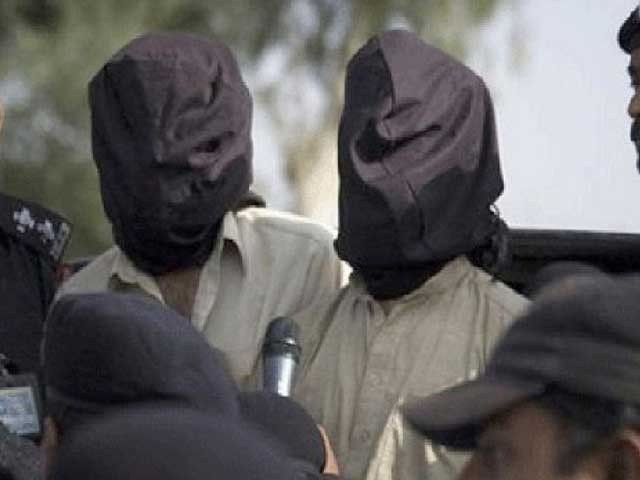
Incidentally, Pakistan also declared the BLA a terror group in 2006 but could not effectively curb its activities. The government had been striving hard for the extradition of Hyrbyair Marri, the BLA leader, during General Pervez Musharraf’s rule. The former was arrested in 2007 in the UK and even tried in the Crown Court in London in 2009 where he, along with Faiz Baloch, was acquitted. It was cited by the defendants during the trial that due to an effective campaign of human rights abuses against law-enforcement agencies (LEAs) in Pakistan, a baseless frame of terrorism was made against them. Reportedly, at one point a proposal was floated to swap the Baloch leader with Rashid Rauf, a dual national involved in a terror plot in the UK with liquid explosives in 2006, who was wanted by the local authorities when Musharraf was at the helm. The latter was against the BLA since rockets were fired by the group during Musharraf’s visit to Kohlu (Balochistan), the hometown of Marris, in 2005.
Let us evaluate how such a step may impact the insurgency in Balochistan and what are its effects on other groups involved in attacks on LEAs, including police in the province. First, looking at the role which the BLA has been playing in fuelling insurgency in Balochistan, we can easily state that both Bugtis and Marris are closely associated with each other. The Pakistani government declared the BLA a terror group in 2006 and took a number of measures to effectively curb its activities. But simply placing the BLA under the SDGT may propel chances that its followers may join other insurgent groups like the United Baloch Army (UBA) or the Balochistan Republican Army (BRA) which are traditionally spearheaded by Baloch sardars. Even the UBA is a group which has been led by the younger brother of Hyrbyair Marri since 2013. The estimated size in terms of personnel strength varies between 500 and 1500, therefore it is highly likely that this membership may transform overnight and join ranks with the UBA or the BRA or emerge as a new insurgent group in Baloch hinterlands. Given that tribal affiliations play a pivotal role in a tribal society, it is more probable that the followers of the BLA may prefer the UBA instead of the BRA. The latter is currently being headed by Brahamdagh Bugti who is also in exile in Geneva, Switzerland. Once they join these insurgent groups, they will definitely augment them in terms of tactical operations, training and attacks on LEAs present in the area.
Second, the dimension of Baloch insurgency has undergone a sea change since 2003 when the Balochistan Student Organisation (Azad) was formed by Allah Nazar Baloch. The effective command of insurgency has practically landed in the hands of the middle class in Baloch society. Nowadays, the Balochistan Liberation Front (BLF) and the Baloch Raji Aajoi Sangar (BRAS) rage across the south-western areas of the province. Moreover, many natives have also joined these groups and are in active cooperation with each other. For example, the Majeed Brigade of the BLA, headed by a local middle class individual, conducted an unsuccessful suicide attack on a bus carrying Chinese engineers in Dalbandin in 2018. It can, therefore, be inferred that placing the BLA under terror entity list may not impact the insurgency drastically rather it may extend extra support to other Baloch insurgent groups and push it towards localised franchise.
Third, as religious extremist and terrorist groups like Lashkar-e-Jhangvi (LeJ) are joined by locals like Saif Ullah Kurd and Dawood Badini, the extent of interaction between sub-nationalists and religious factions has enhanced manifold. The former was a truck driver who was attracted towards the LeJ ideology through socialisation with Dawood Badini. In May 2018, Salman Badini, the LeJ Balochistan chief, was killed in a targeted operation in Killi Almas area of Balochistan. As more and more locals find inroads into different religious extremist organisations, a natural contact is established between Baloch insurgent groups and militant religious factions. They start cooperating with each other in carrying out terror attacks at public places, security check posts and seminaries. Therefore, the current step may not be effective in curbing insurgent attacks in the province.
Lastly, the BLA has attacked and destroyed the Quaid-e-Azam residency in Ziarat in 2015 for which it should be taken to task as it denotes an assault on the federation of the country, albeit symbolically. We should, therefore, press the UK and US governments to declare the BLA leadership terror operators and demand their extradition especially after the organisation has been placed under the SDGT. Pakistan must also agitate against any non-kinetic attack conceived and initiated by the Baloch leaders in exile.
In short, the story of Baloch insurgency is both complex and compounded with multiple factors. Declaring an insurgent group a terror outfit may not help in controlling or defeating the insurgency. In fact, a multi-pronged approach is required to fight it effectively.
Published in The Express Tribune, July 27th, 2019.
Like Opinion & Editorial on Facebook, follow @ETOpEd on Twitter to receive all updates on all our daily pieces.
1731329418-0/BeFunky-collage-(39)1731329418-0-405x300.webp)













COMMENTS
Comments are moderated and generally will be posted if they are on-topic and not abusive.
For more information, please see our Comments FAQ